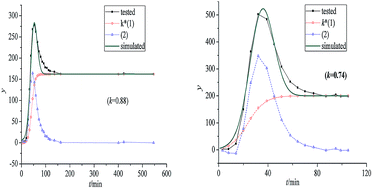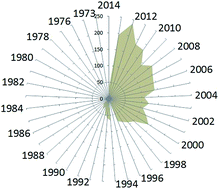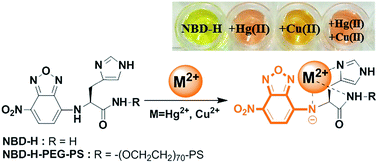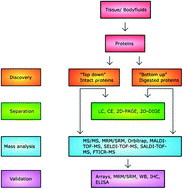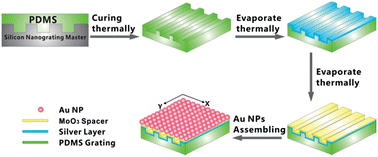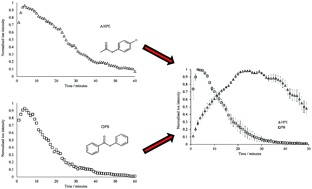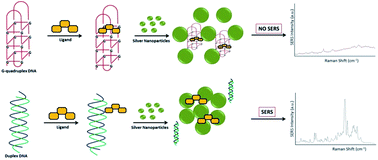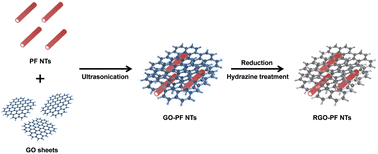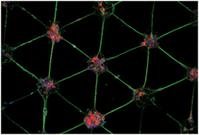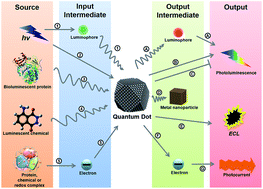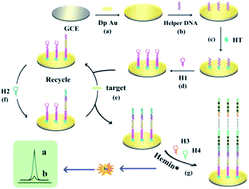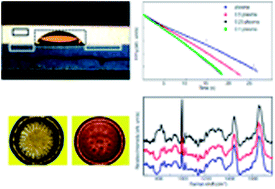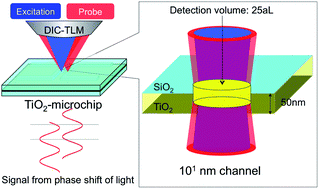Take a look at our most recent HOT Analyst articles, these are now free to access for the next few weeks!
The breakthrough curve combination for xenon sampling dynamic in a carbon molecular sieve column
Liu Shu-jiang, Chen Zhan-ying, Chang Yin-zhong, Wang Shi-lian, Li Qi, Fan Yuan-qing, Jia Huai-mao, Zhang Xin-jun and Zhao Yun-gang
Analyst, 2015,140, 428-433
DOI: 10.1039/C4AN01766H
A WS2 nanosheet-based platform for fluorescent DNA detection via PNA-DNA hybridization
Shuting Wang, Yulin Zhang, Yong Ning and Guo-Jun Zhang
Analyst, 2015,140, 434-439
DOI: 10.1039/C4AN01738B
Hierarchically Assembled NiCo@SiO2@Ag Magnetic Core-Shell Microspheres as Highly Efficient and Recyclable 3D SERS Substrates
Maofeng Zhang, Aiwu Zhao, Dapeng Wang and Henghui Sun
Analyst, 2015,140, 440-448
DOI: 10.1039/C4AN01275E
A Microfluidic Interface for the Culture and Sampling of Adiponectin from Primary Adipocytes
Leah A. Godwin, Jessica C. Brooks, Lauren D. Hoepfner, Desiree Wanders, Robert L. Judd and Christopher J. Easley
Analyst, 2015, Advance Article
DOI: 10.1039/C4AN01725K
Enzymatic-Reaction Induced Production of Polydopamine Nanoparticles for Sensitive and Visual Sensing of Urea
Nan Li, Hai-Bo Wang, Larissa Thia, Jing-Yuan Wang and Xin Wang
Analyst, 2015,140, 449-455
DOI: 10.1039/C4AN01900H
Bladder cancer biomarker array to detect aberrant levels of proteins in urine
S. Gogalic, U. Sauer, S. Doppler and C. Preininger
Analyst, 2015, Advance Article
DOI: 10.1039/C4AN01432D
Ratiometric Fluorescence Detection of Cysteine and Homocysteine with a BODIPY Dye by Mimicking the Native Chemical Ligation
Dong Hee Ma, Dokyoung Kim, Eunseok Seo, Sang-Joon Lee and Kyo Han Ahn
Analyst, 2015,140, 422-427
DOI: 10.1039/C4AN01791A
Glucose-Sensitive Nanofiber Scaffolds with Improved Sensing Design for Physiological Conditions
Mary K. Balaconis, Yi Luo and Heather A. Clark
Analyst, 2015, Advance Article
DOI: 10.1039/C4AN01775G
A Preliminary Raman spectroscopic study of Urine: Diagnosis of breast cancer in animal models
T. Bhattacharjee, A. Khan, G. Maru, A. Ingle and C. Murali Krishna
Analyst, 2015,140, 456-466
DOI: 10.1039/C4AN01703J
Relative quantification of amine-containing metabolites using isobaric N,N-dimethyl-leucine (DiLeu) reagents via LC-ESI-MS/MS and CE-ESI-MS/MS
Ling Hao, Xuefei Zhong, Tyler Greer, Hui Ye and Lingjun Li
Analyst, 2015,140, 467-475
DOI: 10.1039/C4AN01582G
Review on Ion Mobility Spectrometry. Part 2: hyphenated methods and effects of experimental parameters
R. Cumeras, E. Figueras, C. E. Davis, J. I. Baumbach and I. Gràcia
Analyst, 2015, Advance Article
DOI: 10.1039/C4AN01101E
High finesse optical cavity coupled with a quartz-enhanced photoacoustic spectroscopic sensor
Pietro Patimisco, Simone Borri, Iacopo Galli, Davide Mazzotti, Giovanni Giusfredi, Naota Akikusa, Masamichi Yamanishi, Gaetano Scamarcio, Paolo De Natale and Vincenzo Spagnolo
Analyst, 2015, Advance Article
DOI: 10.1039/C4AN01158A
Highly sensitive colorimetric detection of HgII and CuII in aqueous solution:From amino acids toward solid platforms
Jooyoung Park, Byunggyu In, Lok Nath Neupane and Keun-Hyeung Lee
Analyst, 2015, Advance Article
DOI: 10.1039/C4AN01743A
Ion Creation, Ion Focusing, Ion/Molecule Reactions, Ion Separation, and Ion Detection in the Open Air in a Small Plastic Device
Zane Baird, Pu Wei and R. Graham Cooks
Analyst, 2015, Advance Article
DOI: 10.1039/C4AN01929F
Comparison of FTIR transmission and transflection substrates for canine liver cancer detection
Kamila Kochan, Philip Heraud, Matti Kiupel, Vilma Yuzbasiyan-Gurkan, Don McNaughton, Malgorzata Baranska and Bayden R. Wood
Analyst, 2015, Advance Article
DOI: 10.1039/C4AN01901F


